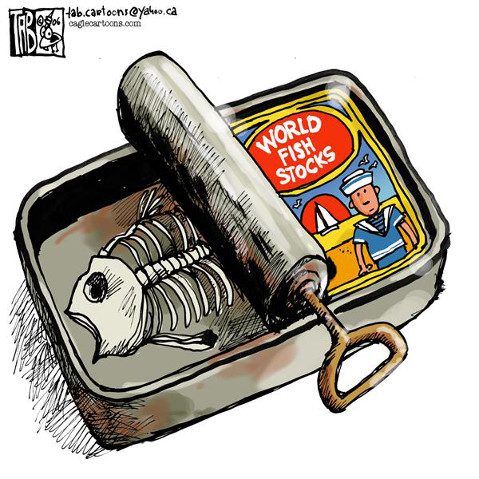West Coast Sardine Fishery Closure Not Due to Overfishing
Commercial Fishing Not Responsible for Sea Lion Deaths

If environmental groups like Oceana are to be believed, the move to shut down the current sardine fishing season and cancel 2015-16’s altogether was to stop overfishing and save starving sea lions deprived of these essential fish.
Neither reason is actually true.
The sardine population has declined for reasons other than fishing. And sea lion mortality has not been caused by the fishery harvesting too many sardines.
The truth is that the marine environment plays the major role in determining the size of the sardine stock and its effect on the ecosystem up and down the food chain. In fact, fishermen supported the Pacific Fishery Management Council’s decision to protect the sardine resource, as the harvest control rule required closure at low population levels, even without Oceana’s ballyhoo.
Dr. Ray Hilborn, professor in the School of Aquatic and Fishery Sciences at the University of Washington and one of the most respected experts on marine fishery population dynamics in the world, recently noted, “Even if there had been no fishing, the decline in California’s sardines would have been almost exactly the same.”
Dr. Kevin Hill, a fisheries scientist with the Southwest Fisheries Science Center who leads West Coast sardine stock assessments said, “Pacific sardines are known for wide swings in their population: the small, highly productive species multiplies quickly in good conditions and can decline sharply at other times, even in the absence of fishing. You can have the best harvest controls in the world, but you’re not going to prevent the population from declining when ocean conditions change in an unfavorable way.”
That’s why the sardine harvest control rule — which has been in place since 2000 — automatically regulates the sardine fishery both by reducing the fishing quota and reducing the harvest rate as the stock declines. And it shuts down the fishery if the biomass falls below 150,000 metric tons. The goal of the policy is to keep at least 75 percent of the sardine population in the ocean.
The 2015 sardine population was estimated to be 97,000 metric tons, a worst-case projection, and the control rule did exactly what it was designed to do — it closed the fishery after a series of poor recruitment years.
Regarding the deaths of sea lions, we’re experiencing an El Niño cycle that is a major reason for increased pup mortality, not the lack of sardines, which comprise a minor portion of sea lions’ diet. According to National Marine Fisheries Service scientist Mark Lowry, who has studied sea lion scat for 30 years, sardines number eighth on the list of typical sea lion dietary preferences.
The sea lion population has increased 5 percent a year even without sardines. Pup counts dipped during the 2003 El Niño, and we’re experiencing another El Niño event now. The sea lion population has actually grown by 600 percent since the mid-1970s; they have taken over docks and sunk boats from Southern California to the Pacific Northwest.
Hard-working fishermen are proud of the precautionary fishery management that’s been in place for more than a decade. They deeply resent groups who accuse them of “overfishing.” It’s an unjust and erroneous accusation leveled at people making an honest living, providing a valuable service to the public, and who have first-hand knowledge and great respect for the environment.
The fact is that sardines are critically important to California’s historic fishing industry as well as to the Golden State. The “wetfish” industry fishes on a complex of coastal pelagic species (CPS) that also include mackerels, anchovy, and market squid, but sardines are an important part of this complex. The industry produces on average 80 percent of total fishery landings statewide and close to 40 percent of dockside value.
Thankfully, the Pacific Fishery Management Council recognized the need to maintain a small harvest of sardines caught incidentally in other CPS fisheries. A total prohibition on sardine fishing would curtail California’s wetfish industry and seriously harm numerous harbors, as well as the state’s fishing economy.
D.B. Pleschner is executive director of the California Wetfish Producers Association, a nonprofit dedicated to research and to promote sustainable wetfish resources.



